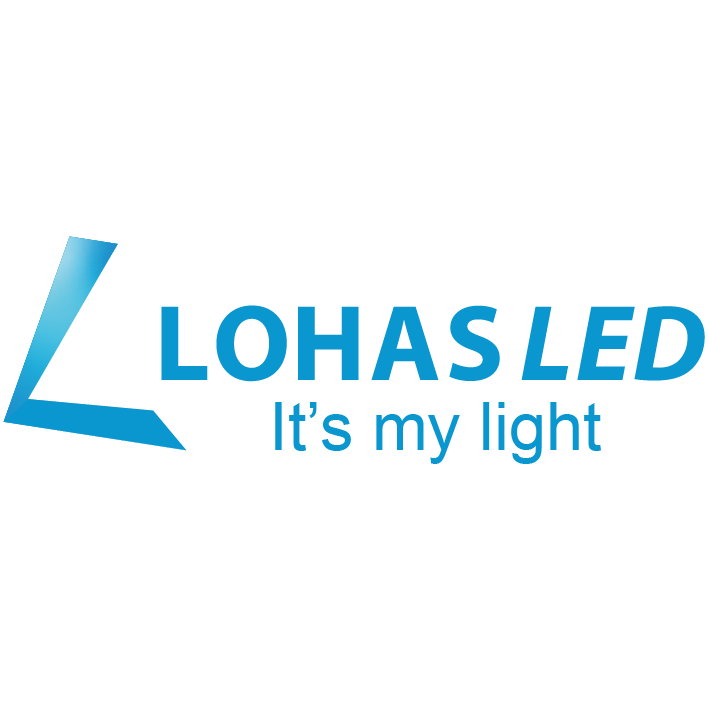An Ultimate Guide to Choosing the Right Light Bulb
With the enormous change of the market, light bulbs are now designed in a variety of shape, base and application, which really makes the purchase a little more complicated than it used to be. Then, standing in front of rows of light bulbs can seem overwhelming, and choosing the right one from wide selection can be hit and miss if you don't have the right information. So before you purchase your next bulb, you should arm yourself with this ultimate buying guide.

OUTLINE OF STEPS:
Know your cap fitting and bulb shape.
Consider the type of light bulb.
Determine what kind of ambient (brightness & color) you want.

OUTLINE OF STEPS:
Know your cap fitting and bulb shape.
Consider the type of light bulb.
Determine what kind of ambient (brightness & color) you want.
Know your cap fitting and bulb shape.
Reference: Five tips for choosing the right light bulb from Which?
Choosing a light bulb with the wrong fitting or shape is one of the most common and frustrating mistakes we made when purchasing light bulbs. Nowadays, light bulbs come in a variety of cap fittings and shapes like e12 bulb, e26 led bulb and A19 bulb, therefore; once you choose wrong your light bulb simply won't fit. So, this is the most critical piece of information when selecting new bulbs, and you need to write down the fitting and shape reference number then take it along to match with the packaging on the box of your new bulb.
To take the standard light bulb used in U.S. households for instance, it is an A19 bulb with E26 base. The E means that the bulb has an Edison Screw and the 26 means the base is 26mm across (in Europe you'll find E27 bulbs). Then, the A refers to the bulb shape, which is for arbitrary and is the shape that we all think of when we envision a light bulb (C is for candle, G is for Globe etc.), while the number 19 designates the size.
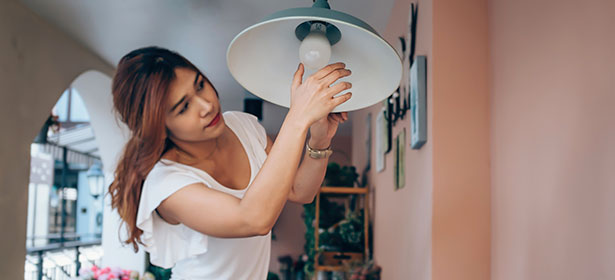
Choosing a light bulb with the wrong fitting or shape is one of the most common and frustrating mistakes we made when purchasing light bulbs. Nowadays, light bulbs come in a variety of cap fittings and shapes like e12 bulb, e26 led bulb and A19 bulb, therefore; once you choose wrong your light bulb simply won't fit. So, this is the most critical piece of information when selecting new bulbs, and you need to write down the fitting and shape reference number then take it along to match with the packaging on the box of your new bulb.
To take the standard light bulb used in U.S. households for instance, it is an A19 bulb with E26 base. The E means that the bulb has an Edison Screw and the 26 means the base is 26mm across (in Europe you'll find E27 bulbs). Then, the A refers to the bulb shape, which is for arbitrary and is the shape that we all think of when we envision a light bulb (C is for candle, G is for Globe etc.), while the number 19 designates the size.

Bulb Fittings
Caps and bases are labelled using both letters and numbers. The letter indicates the type of base, while the number indicates the diameter of the base in millimetres (mm). There may also be a third letter to indicate whether there are one, two, or three pins.
Here are some of the most common cap and base types:
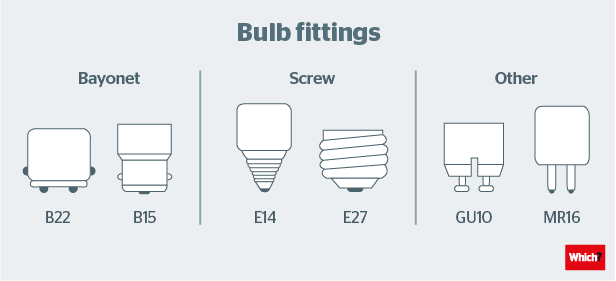
Here are some of the most common cap and base types:

Bulb Shapes
When you have your bulb fitting in the bag, you will need to decide the shape of the bulb you want at the same time. Different shapes provides a slightly different spread and angle of light, from the almost 360-degree spread of a globe or golf bulb, to the narrow beam of a spotlight. So, aside of the 'right' shape of the bulb and spread of the light is essentially down to your personal preference, you must do consider whether the shape of your bulb will fit sensibly in their chosen location.
Here are some of the most common shape types:
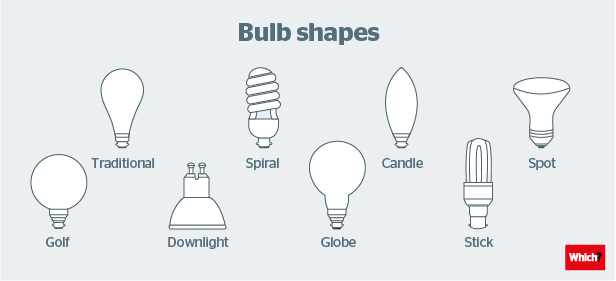
Here are some of the most common shape types:

Consider the type of light bulb.
As we know, there are various different light bulb technologies on the market, all with differing qualities in terms of lifespan, energy efficiency and ambience. For a detailed explanation of each type of bulbs and their pros and cons, read our individual guides and reviews of halogens, CFLs and LEDs.
CFL (Compact Fluorescent Lamp)
The CFL are those white curly tube bulbs known for their eco-friendly credentials, which is designed to replace incandescent bulbs in homes and commercial building. Working on the principle of fluorescent lamps, the CFL produces the same amount of light with less power. It consists of multiple tubular loops, filled with mercury and has a resemblance to the incandescent bulb.
Pros:
*Four times more efficient than incandescent bulbs, CFLs have a longer lifespan up to 10000 hours and higher luminous efficiency.
*CFLs are cheap and widely available in a range of sizes and outputs.
Cons:
*Some older CFLs were slow to brighten, so not everyone likes the light they emit, but this has improved considerably in recent years.
*The mercury in the loops makes them difficult to dispose of.
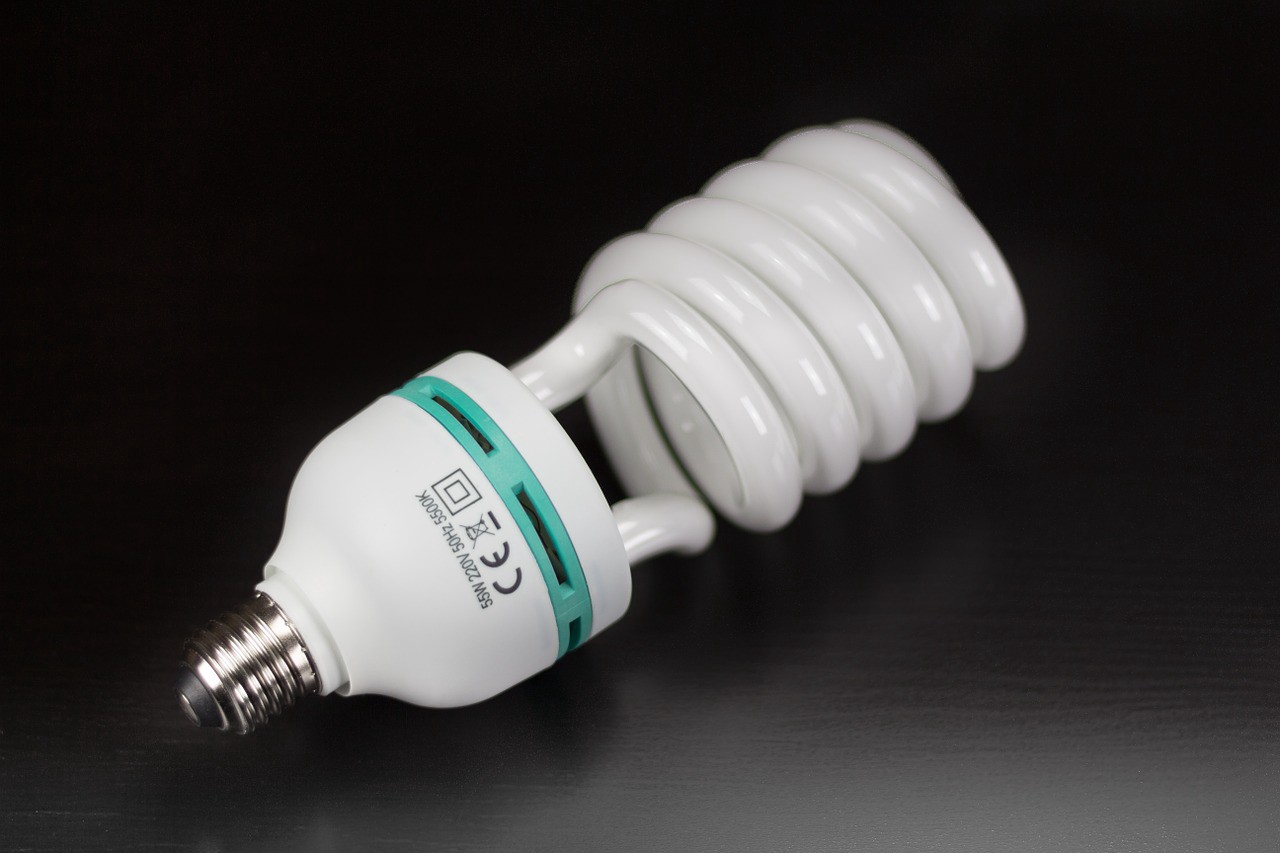
Pros:
*Four times more efficient than incandescent bulbs, CFLs have a longer lifespan up to 10000 hours and higher luminous efficiency.
*CFLs are cheap and widely available in a range of sizes and outputs.
Cons:
*Some older CFLs were slow to brighten, so not everyone likes the light they emit, but this has improved considerably in recent years.
*The mercury in the loops makes them difficult to dispose of.

Halogen (Energy-saving incandescents)
Using the tungsten filament like incandescent bulb do, the light from a halogen bulb is similar to an incandescent one in colour and quality. But they are an improved version of incandescent bulbs in which tungsten filament is surrounded by a halogen gas, rather than argon or nitrogen, which makes them provide bright light with better efficiency.
Pros:
*About 30% more efficient than incandescent bulbs and with a typical lifespan of up to 3 years.
*With an expected life span of less than two years, a halogen bulb is unlikely to pay for itself before it fails.
Cons:
*Rather bright and harsh, so best for intense task lighting rather than indoor ambience.
*They can emit a lot of heat.
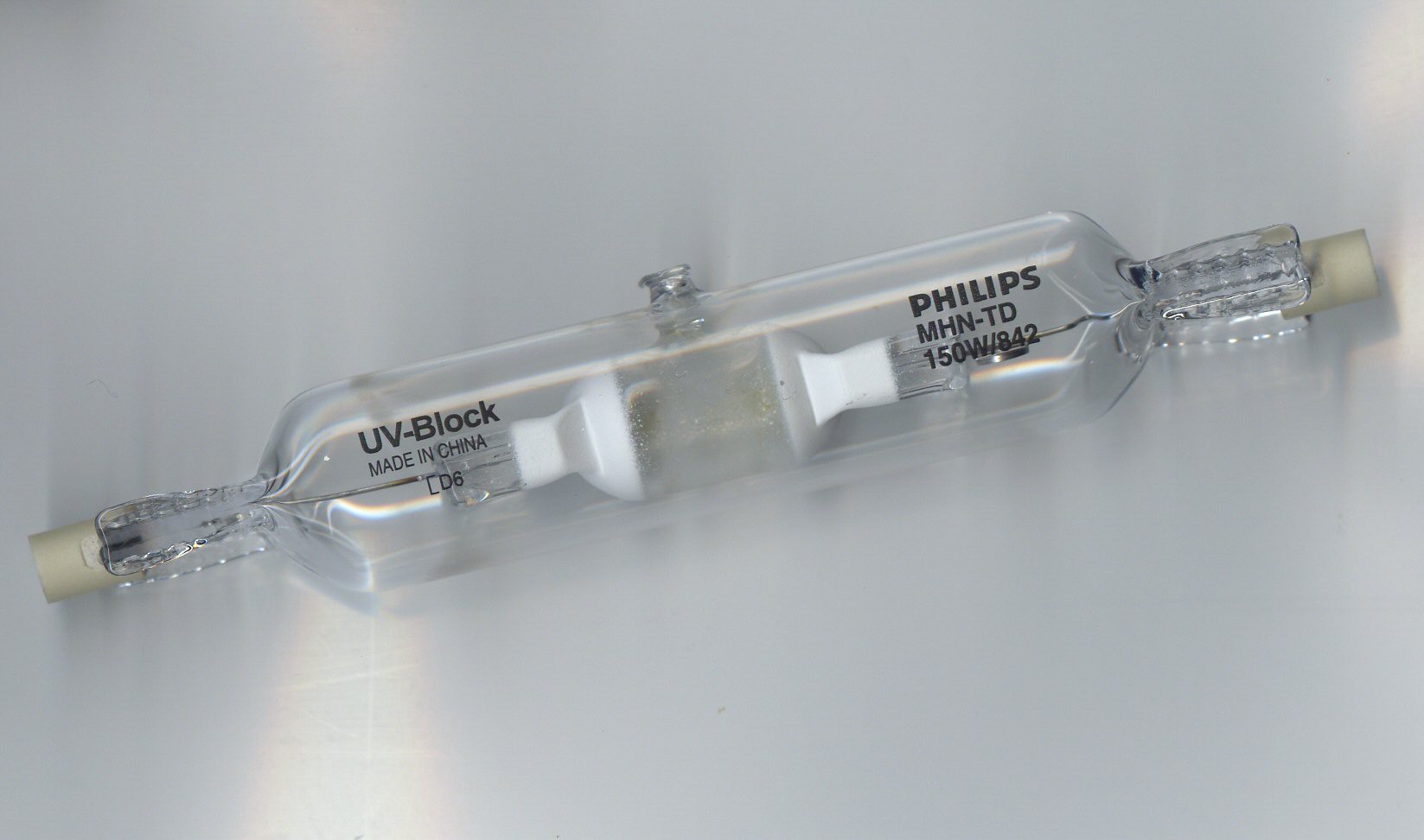
Pros:
*About 30% more efficient than incandescent bulbs and with a typical lifespan of up to 3 years.
*With an expected life span of less than two years, a halogen bulb is unlikely to pay for itself before it fails.
Cons:
*Rather bright and harsh, so best for intense task lighting rather than indoor ambience.
*They can emit a lot of heat.

LED (Light Emitting Diode)
LED is a semiconductor device in which the electricity is applied to the negatively charged diode, resulting in the flow of electron and release of the photon. The photons combine to emit light from the diode. Then, a LED bulb consists of multiple diodes producing the required amount of light.
Nowadays, all smart bulbs, the color changing light bulb or others, are LED bulbs that can connect to Wi-Fi so you can control them from your computer or a smartphone app. While the functionality is a bit different for each bulb, you can typically tell them to turn on or off at different times and turn them on or off from afar.
Pros:
*They are energy efficiency (up to 80% more efficient than incandescent bulbs) and can produce brighter light with less energy.
*They can provide a variety of light colors.
*They can give a lovely warm light and they can look just as stylish as any Edison filament bulb.
Cons:
*They are whilst initially more expensive to buy, but they can last up to 25 years.
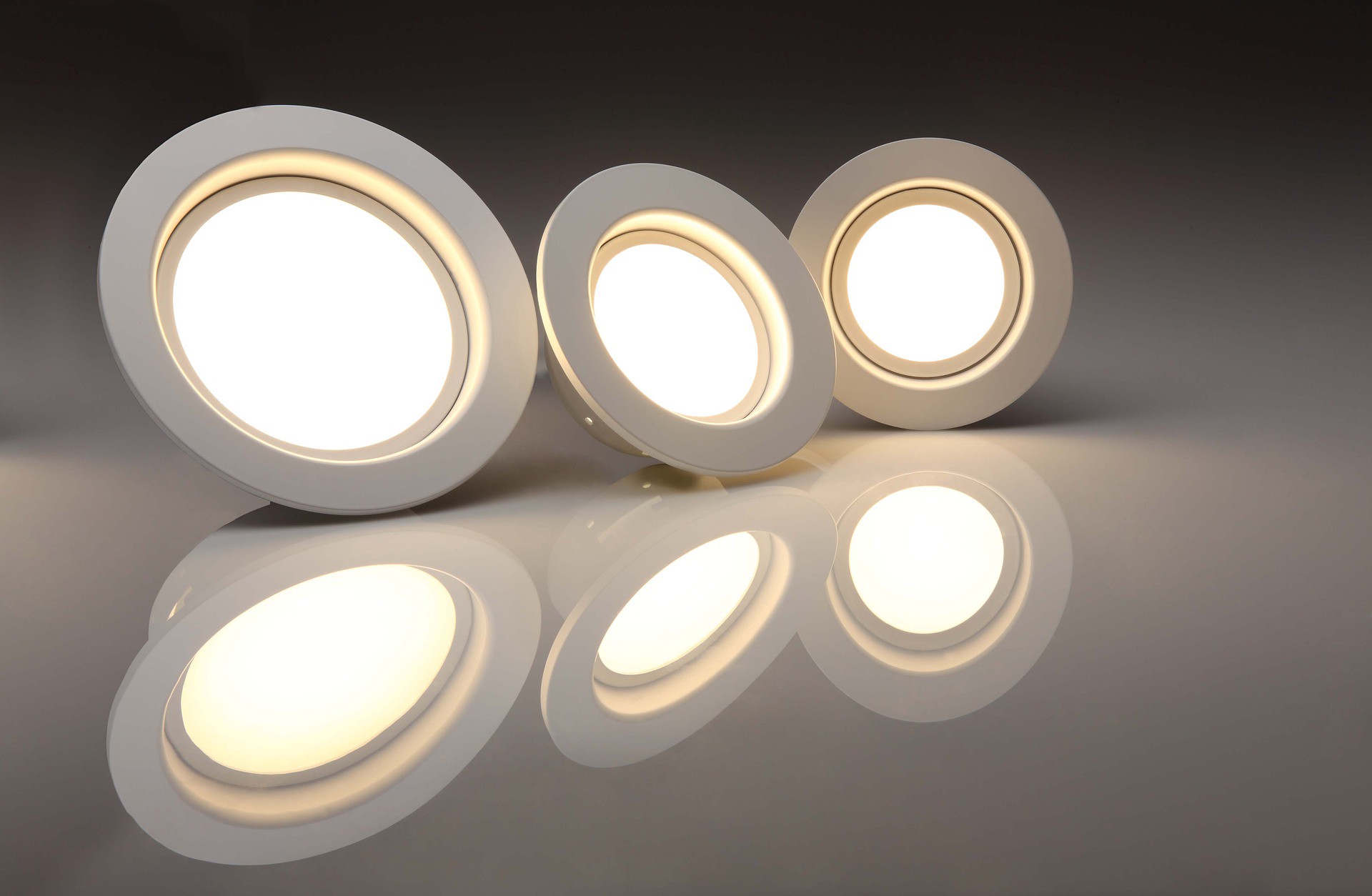
Nowadays, all smart bulbs, the color changing light bulb or others, are LED bulbs that can connect to Wi-Fi so you can control them from your computer or a smartphone app. While the functionality is a bit different for each bulb, you can typically tell them to turn on or off at different times and turn them on or off from afar.
Pros:
*They are energy efficiency (up to 80% more efficient than incandescent bulbs) and can produce brighter light with less energy.
*They can provide a variety of light colors.
*They can give a lovely warm light and they can look just as stylish as any Edison filament bulb.
Cons:
*They are whilst initially more expensive to buy, but they can last up to 25 years.

Determine what kind of ambient (brightness & color) you want.
Wattage is no longer the best way to determine which bulb will be a direct replacement for the bulb that just burned out. Then, instead of watts, there are two technical terms you should pay attention to when deciding what type of light you'd prefer: look for the number of lumens, the measure of how much light a bulb produces rather than how much energy it uses; and the colour of the light, which is measured in degrees Kelvin. Now, you may be confused - what's the difference between brightness and colour? Below is a short explanation of each:
Brightness
When it turns to how bright the light your light bulb will emit, these days everybody works in lumens, which is a measure of brightness. You can see how many lumens a bulb provides on its box, or, on our website in the information on each light bulb page:
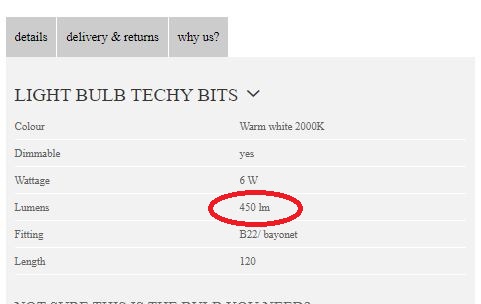

Color
Now that you have decided on how bright you want your bulbs, you need to decide on the colour of the light. For choosing the color of the bulb, we're surely into the realms of personal taste. You can of course buy some color changing light bulbs for decorative purposes, but don't you know that even normal 'white' light has different 'colors'?
Actually, white light bulbs have a color cast. They can be the warm, yellow light of the traditional incandescent light bulb, the cool, blue light of daylight or somewhere in between. To determine the direct color replacement, you should look at the color temperature, which is measured in degrees Kelvin. Here's how:
2700 - 2800K: Warm, yellow light
3000 - 3200K: Still slightly yellow, warm light
3500 - 4000K: A neutral, bright white light
5000 - 6500K: A slightly bluish, bright white light
Or you can use the reference below to match the Kelvin scale rating with the colour you're after.
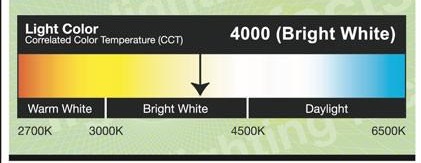
As you can see, with various things you should focus on during the purchase, choosing a light bulb has never been a piece of cake. Also, taking the right bulb can perfectly brighten your home up as you want, while don't lose light over time and provide a lot of light for a small amount of power. But the worst will add to your energy bills. Hence, always let this post beside you to help you choose the right bulb and brighten up your home in no time.
Actually, white light bulbs have a color cast. They can be the warm, yellow light of the traditional incandescent light bulb, the cool, blue light of daylight or somewhere in between. To determine the direct color replacement, you should look at the color temperature, which is measured in degrees Kelvin. Here's how:
2700 - 2800K: Warm, yellow light
3000 - 3200K: Still slightly yellow, warm light
3500 - 4000K: A neutral, bright white light
5000 - 6500K: A slightly bluish, bright white light
Or you can use the reference below to match the Kelvin scale rating with the colour you're after.

As you can see, with various things you should focus on during the purchase, choosing a light bulb has never been a piece of cake. Also, taking the right bulb can perfectly brighten your home up as you want, while don't lose light over time and provide a lot of light for a small amount of power. But the worst will add to your energy bills. Hence, always let this post beside you to help you choose the right bulb and brighten up your home in no time.
 USD
USD GBP
GBP CNY
CNY SAR
SAR SGD
SGD NZD
NZD ARS
ARS INR
INR COP
COP AED
AED